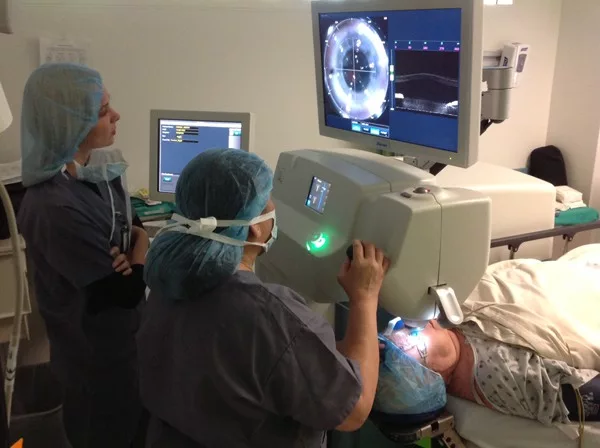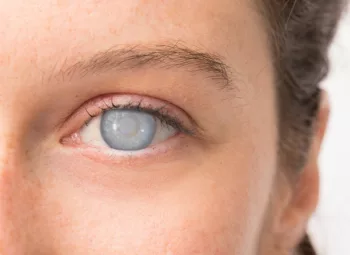More than half of all Americans age 65 and older have a cataract or have had cataract surgery. Cataract surgery is one of the most commonly performed surgeries in the United States.

Although the path to cataract surgery is straightforward and common, there are still differences and inherent choices in both the procedure and type of intraocular lens chosen. So it begs the question: Which surgery is best? Traditional or advanced? Which Intraocular lens is optimal for your needs and lifestyle?
Traditional Cataract Surgery
Traditional refractive cataract surgery began with the introduction of intraocular lenses (IOLs), which raised cataract surgery to a refractive procedure.
A cataract is the clouding of the normally clear lens of the eye. In traditional surgery, your eye surgeon will make a small incision in the side of your cornea to remove the clouded portion of the lens. Then, a small probe is inserted into your eye to induce a process called phacoemulsification. The probe will release ultrasonic waves that break up the clouded lens so that it can then be suctioned out by your surgeon.
During the procedure, your surgeon will also insert an intraocular lens into the same incision. Like the procedure itself, there are different types of intraocular lenses to choose from, and the choice that is best for you will depend on your unique lifestyle and eye health needs.
After the intraocular lens is inserted, there are typically no sutures needed. During traditional cataract surgery the incision is so miniscule that the eye tissue will heal on its own. Traditional cataract surgery is an outpatient procedure with a typically short recovery time.
Advanced Cataract Surgery
Advanced Cataract Surgery is commonly referred to as cataract surgery with the introduction of the femtosecond laser. The new femtosecond laser-assisted surgery is touted to improve the effectiveness, precision, outcome, and safety of traditional surgery.
Advanced laser cataract surgery is bladeless and primarily computer-controlled, which helps to automate and safeguard some of the most traditionally challenging steps of cataract surgery.
Perhaps one of the most important distinctions is in the way the femtosecond laser can help to “soften” the cataract. The femtosecond laser used in advanced surgery uses near-infrared light to break up the cataract into little pieces before being removed via suction. This can negate some or all of the need for the ultrasound instrument to be used to break up the cataract, which can make the procedure safer and more precise.
Just like traditional cataract surgery, once the natural lens of the eye is removed, a permanent artificial lens is inserted to replace it. Other benefits include the ability to make more precise capsulotomies: the opening and removal of part of the lens capsule to make room for the new lens.
Ultimately, the difference between traditional and advanced cataract surgery is in the instruments. Traditional surgery uses a hand-held instrument with a blade and advanced surgery typically uses an advanced blade-free laser technology.
Contact NeoVision Eye Center for Your Free Consultation
The question of which surgery is best ultimately depends on a multitude of factors, and can only be determined by your ophthalmologist. Both procedures are some of the most common and safest surgeries performed in the United States and have a very high success rate. If you would like to find out which is best for you, contact your trusted eye surgeon experts at NeoVision Eye Center to schedule your complimentary cataract surgery consultation.
Are you ready to find out whether Traditional or Advanced cataract surgery is better for you?
Dr. Shobha Tandon and her staff are here to answer any questions or concerns you may have about taking the next step towards better vision. Fill out the form below quickly get in touch with any questions or concerns you may have with getting Cataract Surgery at Neovision.
"*" indicates required fields





